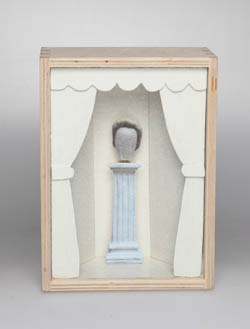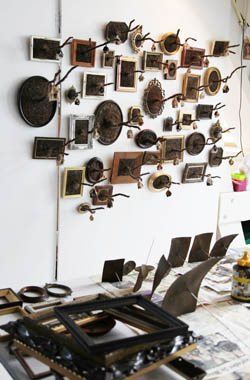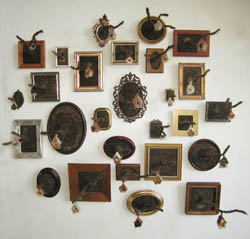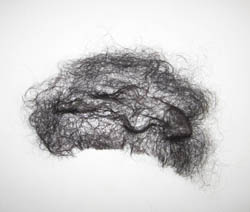New works
My house, blanket and a cape.
I'm working on several works at the same time. I try to combine them into one total work about 'finding your own way'.
 |
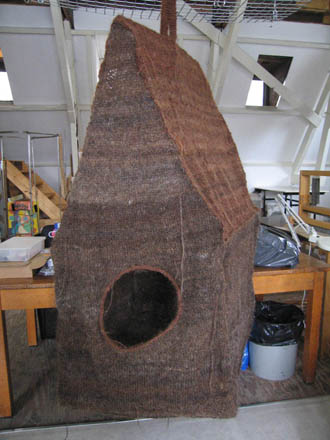 | 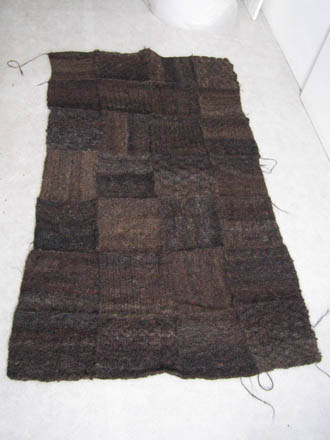 | 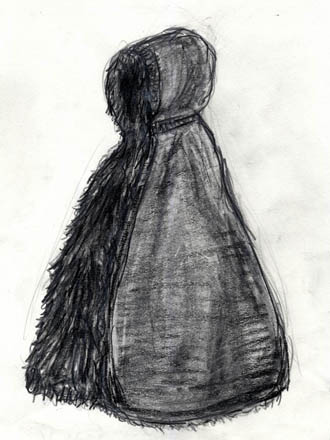 |
Broadcast from the SWR in Germany about the exhibition Hautnah at Villa Rot.
The exhibition will be at Villa Rot until January 31 and will continue at the Kunstferein Leonberg in Leonberg.
http://www.swr.de/bw-aktuell/-/id=98428/did=5849534/pv=video/nid=98428/igbuom/index.html
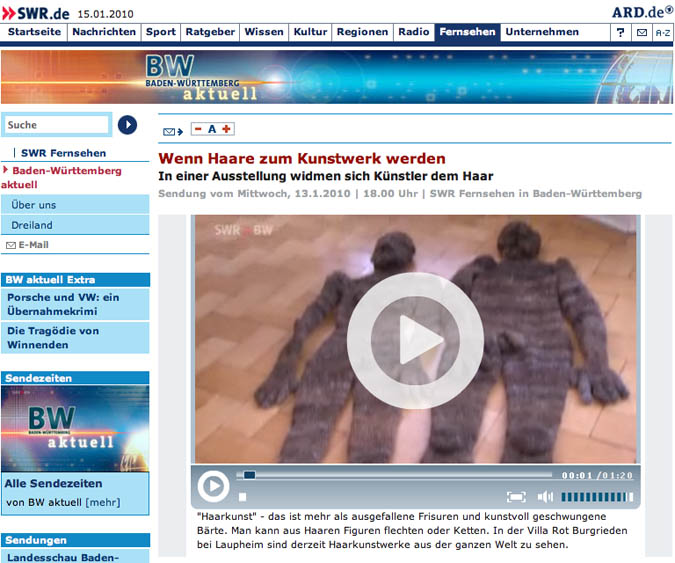 |
Interview Textiel Plus
Textiel Plus no. 210, winter 2009.
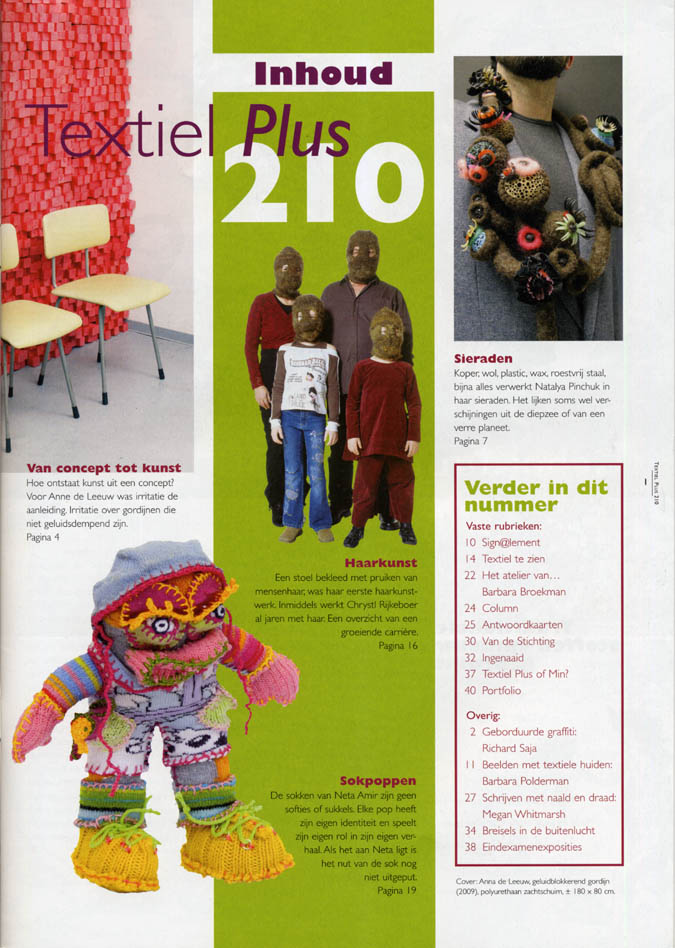 |
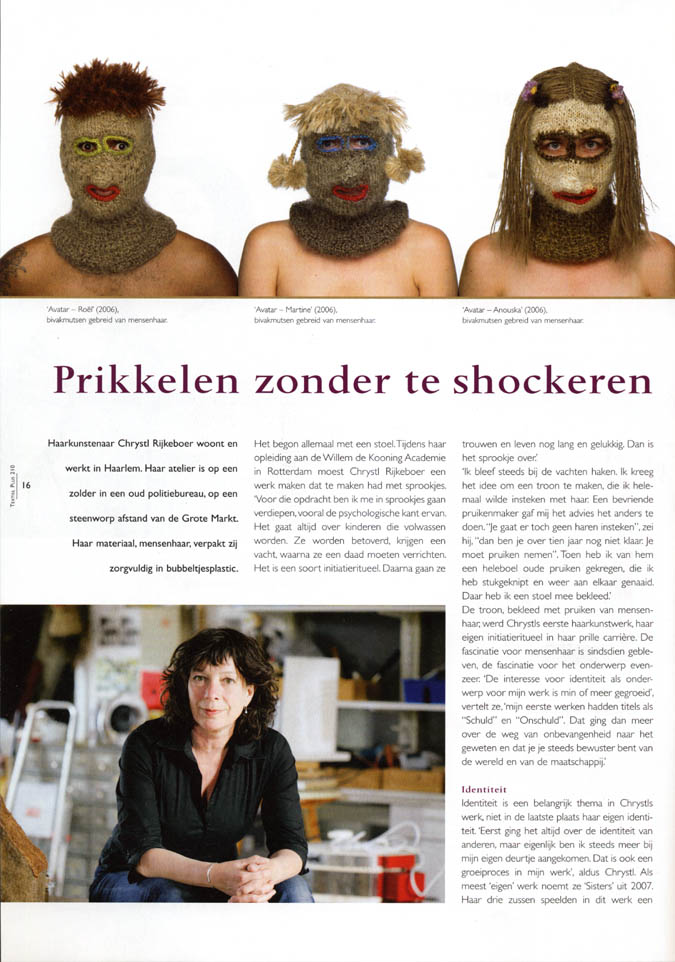 |
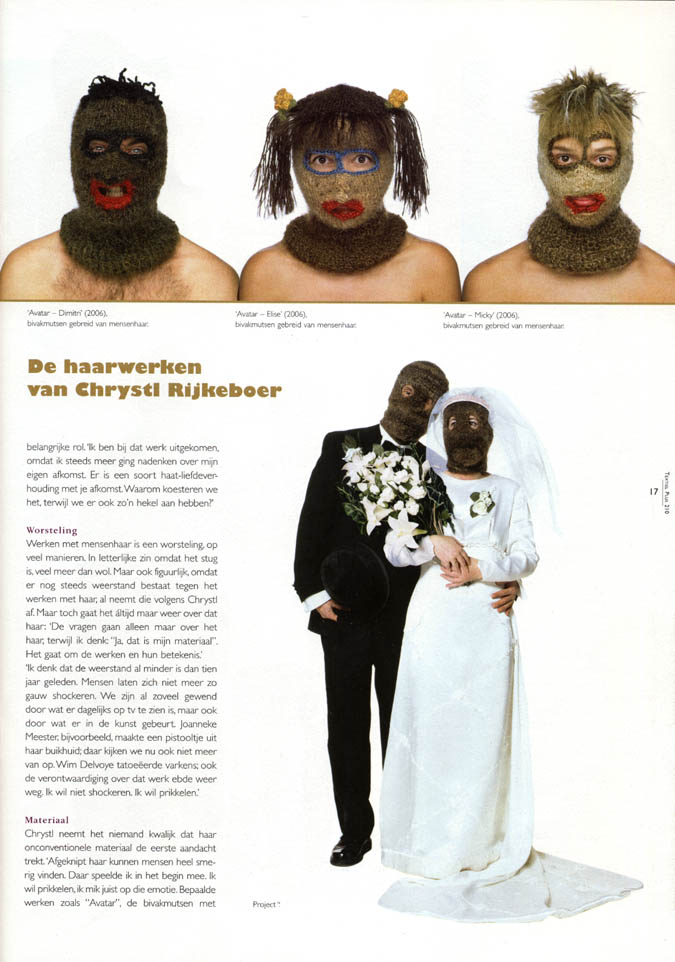 |
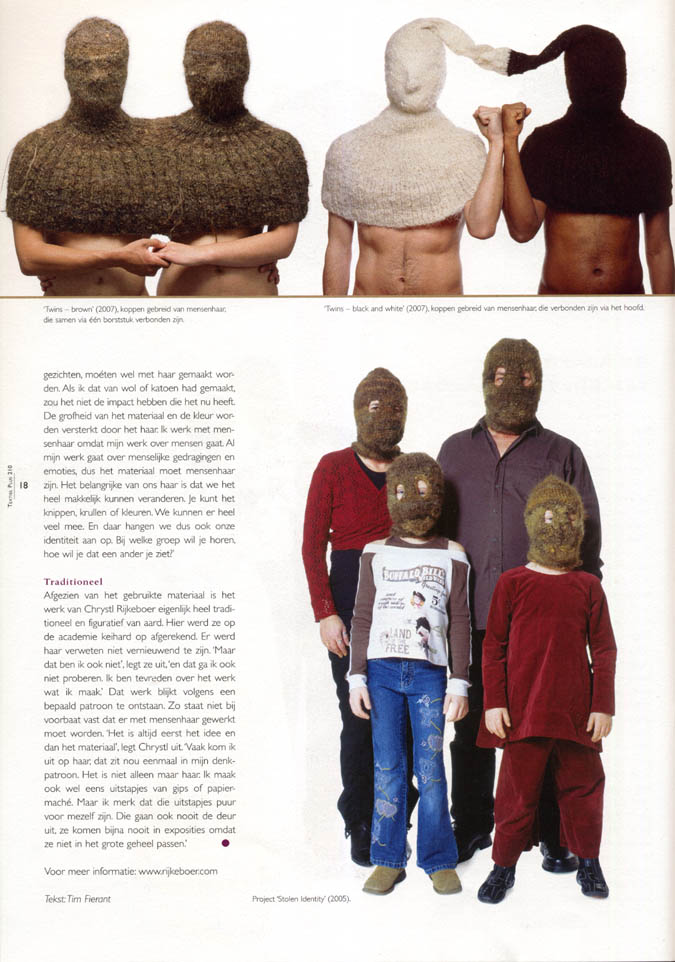 |
‘Wish I could fly’
Try-out for making stories about people and magic thinking.
 |
Home sweet Home at ArtUnit
November 2009
Each year November I show work together with Sandra Roozen at our window gallery ArtUnit.
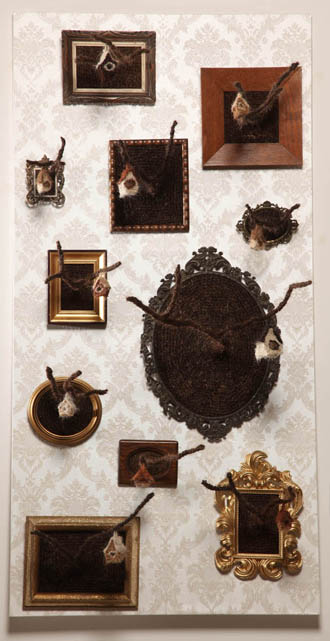 | 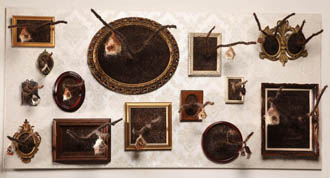 |
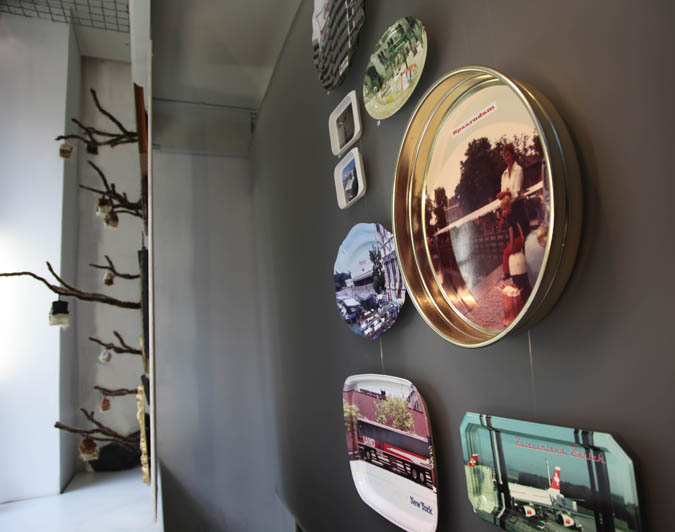 |
Van hem, naar haar, naar Hippolitushoef.
20 Years Dolly Bellefleur
I made the famous legs of Dolly specially for the show of '20 years Dolly Bellefleur, van hem, naar haar, naar Hippolitushoef.' show in the Public Library Amsterdam. My work be shown from November 10th until December 8th.
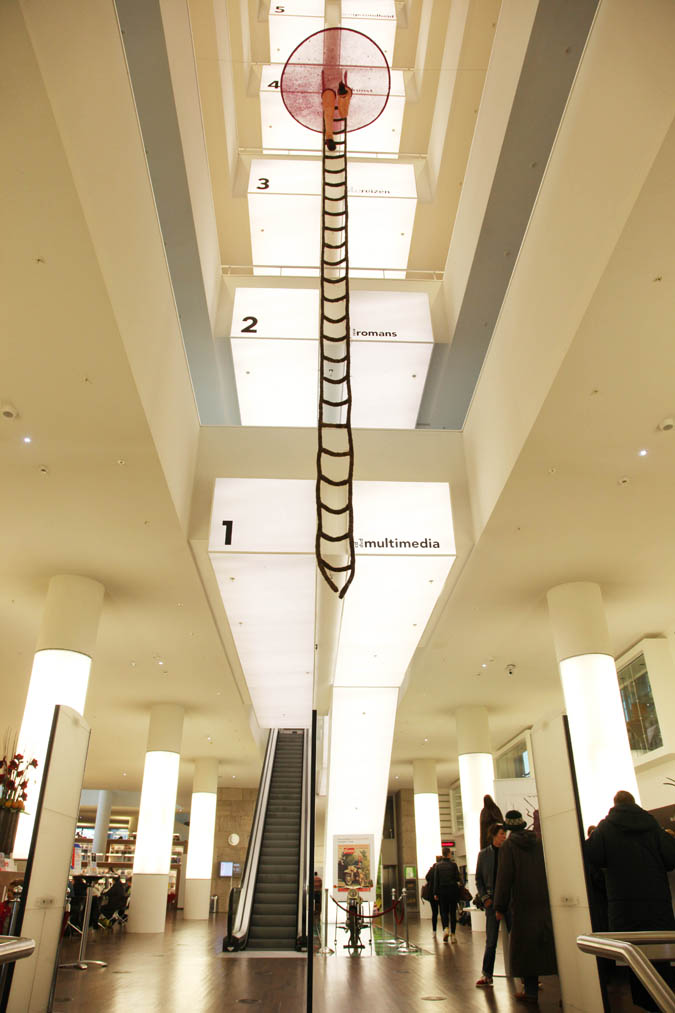 |
‘Traces of Being’
Exhibition curated by Petra Spuijbroek during the annual 'Kunstlijn' in Haarlem
‘Traces of Being’ is the openings-exhibition of the 'Haarlem Kunstlijn 2009' in the Lichtfabriek in Haarlem, curated by Petra Spuijbroek. Participating artist are: Chrystl Rijkeboer, Alet Pilon, Eric de Nie, Alice Brasser, Jos de L'Orme, Michèle Baudet, Harm van Ee, Jeannette de Bruin, Simone de Groot and Marissa Evers. The opening was done by the famous art-hysterica 'Dolly Bellefleur'.
November 6,7 and 8 2009.
 |  |  |
 |  |  |
 |  |  |
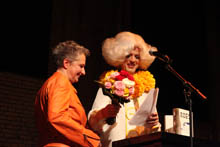 |  |  |
Exhibition Hautnah
Some bigger photos of my work in Villa Rot.
 |  |
 |  |
 |  |
Opening ‘Hautnah’
Museum 'Villa Rot'
I'm very pleased to be in the exhibition 'Hautnah', curated by Dr. Stefanie Dathe. She made a beautiful exhibition about 'Hair in art and culture'. The museum 'Villa Rot', in Burgrieden-Rot (Germany), is a small museum with bright, but intimate spaces and rooms, in which the work is beautiful presented.
I just can show a small part of the exhibition:
pict.1-my work. pict.2-Günter Weseler. pict.3-Nandipha Mntambo, Mandana Moghaddam.
pict.4- historical work and my work. pict.5 - my work. pict.6 - Bettina Zachow.
pict.7- Mariella Mosler. pict.8- Barbara E. Geyer. pict.9- Jenny Michel and Michael Hoepfel.
pict.10- Sekyung Lee. pict.11- my work. pict.12 - Ruth Marten.
pict.13- Günter Weseler, Ruth Marten, Nandipha Mntambo. pict.14- Mandana Moghaddam, Ursula Neugebauer. pict.15- Yael Davids.
 | 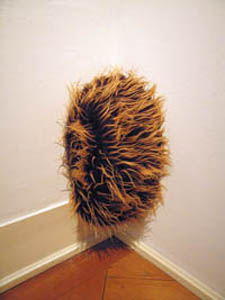 |  |
 |  |  |
 |  |  |
 |  | 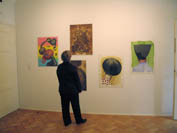 |
 |  |  |
Hautnah
Shows in Villa Rot, Germany from October 25 until January 31, 2010.
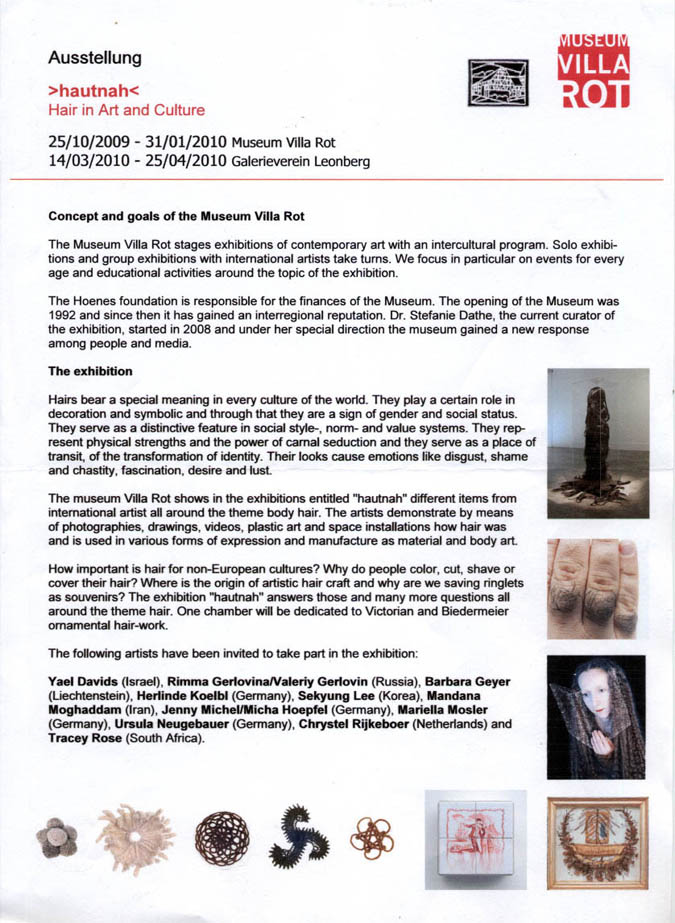 |
’ Womensworkmagazine’
Interview in the digital magazine 'Womensworkmagazine', by Marie Gibbons.
Check out this website: http://womensworkmagazine.com/
Working on ‘Here’s Dolly!’
The first try-out with the ladder.
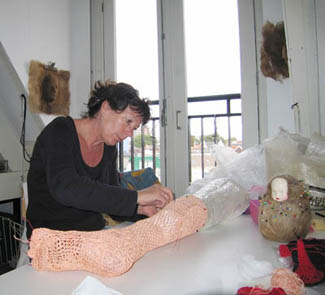 | 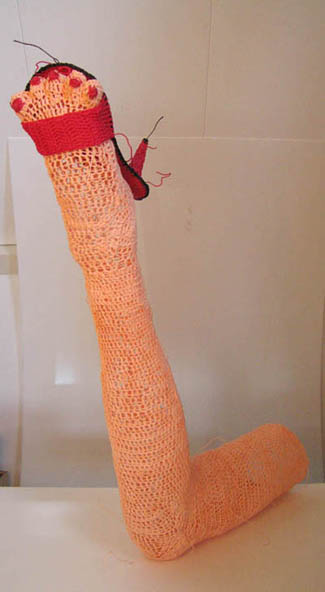 |
 |  |
My next project; The legs of Dolly Bellefleur
For my next project I will crochet the famous legs of Dolly Bellefleur. I will combine this work with an older work. 'R's Escape' togethher with 'Here's Dolly!'
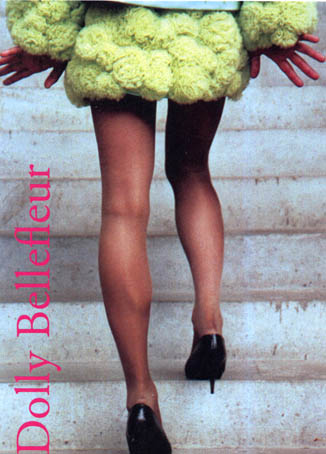 | 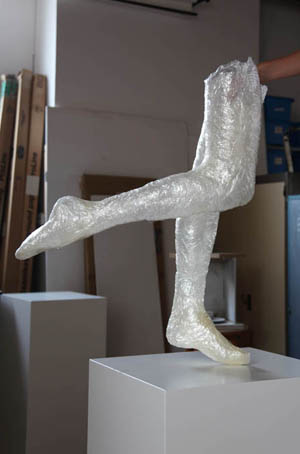 |
Home sweet Home
Finished after so many months!
The work contains 72 frames at the moment. I regard this work as finished now. Of course I will make one or two more whenever I stumble over frames I can't resist.
'Home sweet Home'
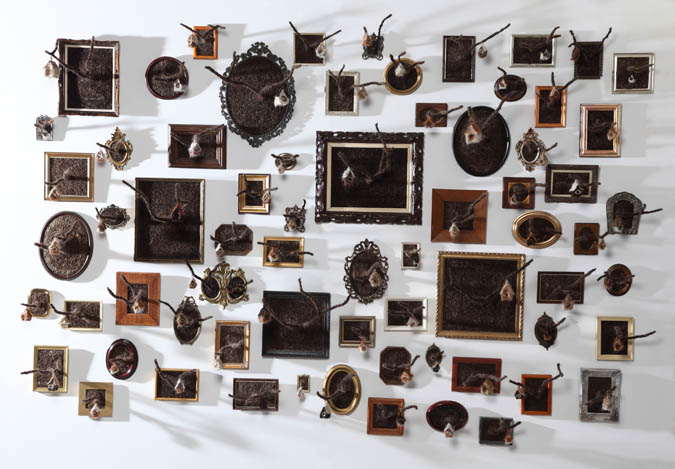 |
Don’t fence me in
Today I installed 'Don't fence me in'. This work will be shown until September 7 at 'De Vishal", Grote Markt in Haarlem.
‘Don’t fence me in’
2009
‘Don’t fence me in’, is voor mij synoniem aan; ‘Vrijheid van meningsuiting’.
Vandaag de dag een beladen veelgebruikte term vanwege de onvrede, angst en woede die binnen onze samenleving heerst. Als vertolker van deze onderbuikgevoelens en de vrijheid van meninguiting is Geert Wilders een waar icoon. Vanwege zijn standpunten hebben zowel zijn voor- als tegenstanders hem op een voetstuk geplaatst.
Wilders gebruikt zijn haardracht als identiteitskenmerk, ik gebruik dit kapsel als icoon voor zijn optreden, wat ik theatraal en gedramatiseerd vind.
‘De Kleine Zaal’ met zijn beperkte, afgesloten ruimte gebruik ik als podium voor mijn installatie ‘Don’t fence me in’ (‘beperk mij niet’). Het geheel toont zowel de onaantastbaarheid- als de kwetsbaarheid van deze boodschap.
‘Vrijheid van meningsuiting’ is een persoonlijk recht. Niet iets waar politici mee aan de haal moeten gaan en zo gebruiken voor hun eigen politieke programma.
----
‘Don’t fence me in’, for me is synonymous with ‘Freedom of speech’.
Nowadays it is an emotionally charged, much-used term because of the dissatisfaction, fear and anger, within our society. The politician Geert Wilders became a true icon as the exponent of these emotions and the freedom of speech. Because of his opinions both his supporters and his opponents, have placed him on a pedestal.
Wilders uses his hair style as a ‘characteristic trademark’, I use this hairdo as a icon of his way of action, which I find theatrical and dramatized.
‘De Kleine Zaal’, a restricted, isolated space is used as the stage of my installation ‘Don’t fence me in’. This unity shows both the unassailability as well as the vulnerability of this pronouncement.
‘Freedom of speech’ is a personal human right. Not a slogan politicians use for their own political programme.
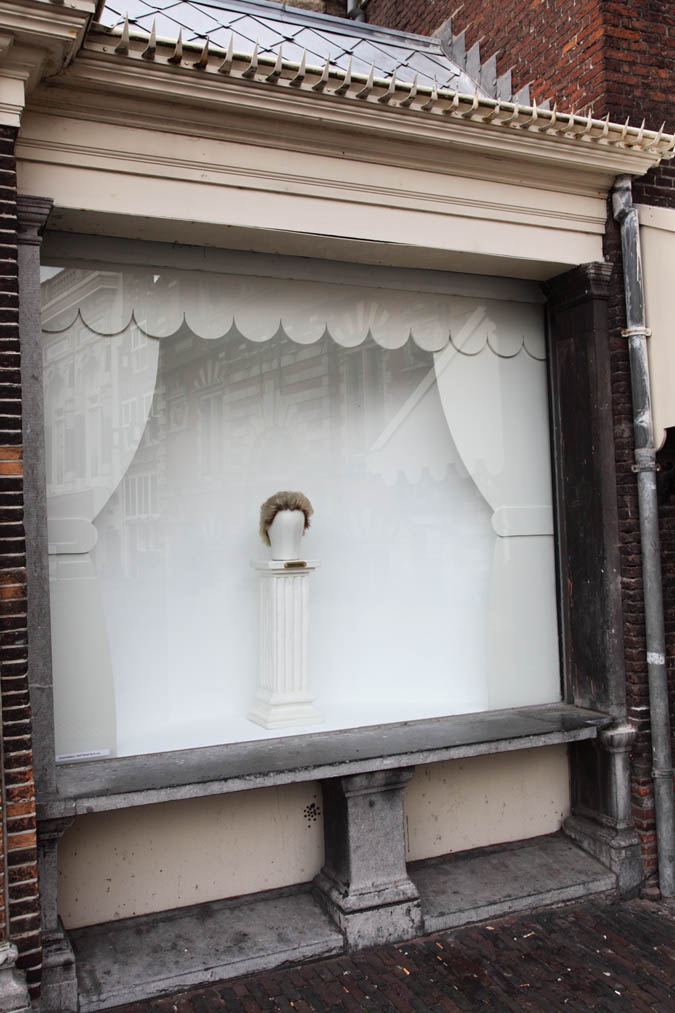 |
Don’t fence me in - Maquette
I'm making this installation for a show at 'de Kleine Vishal' in Haarlem. This work will be in the window from August 7 until September 7.
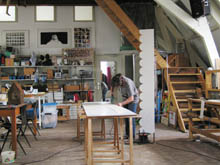 | 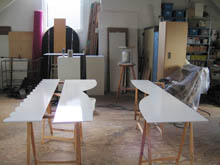 | 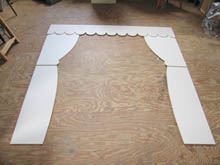 |
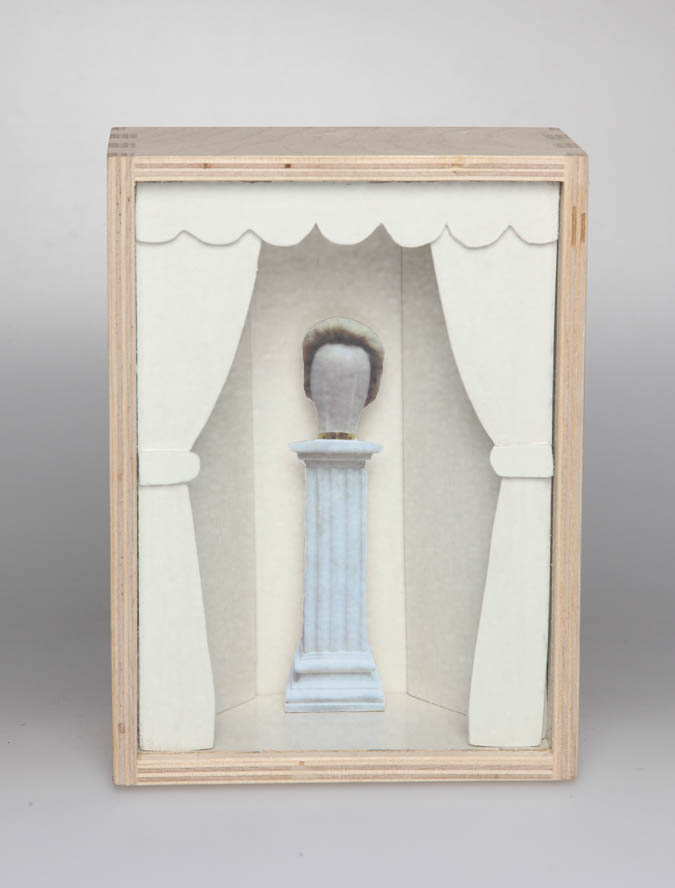 |
Home sweet Home
At last I'm getting there!
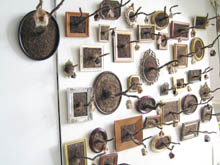 |  |  |
Still working on ‘Home sweet Home’
I think I have about 40 frames ready now.
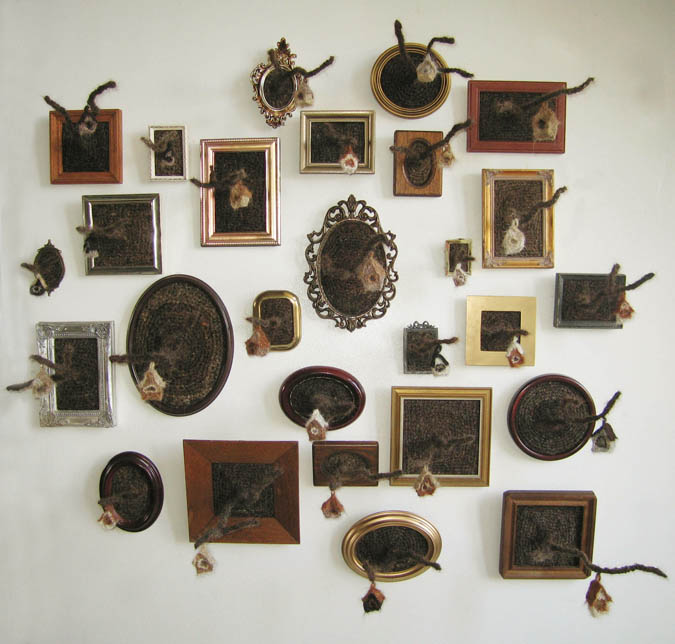 |
Interview with Heather Hanna.
Heather Hanna is currently a PhD student with the Open University in England, and this interview forms part of her research.
Interview with Chrystl Rijkeboer 15 April 2009
HH. When did you first start working with hair, Chrystl?
CR. It was when I was still at art school. We organized an exhibition about fairytales. I was working on welded metal sculptures, but looking for a more psychological approach. All fairytales are about children who grow up - about innocence. A witch turns them into a bear or a bird by putting a spell on them. They grow fur or hair, and something happens from that. It’s about initiation, about maturing, growing pubic hair. The idea of hair came to me from a visit to the WWII death camps in Poland twenty years ago. I saw blankets made from hair and it amazed me that anyone would make blankets from hair.
The first piece I made was a combination of fairytales and hair, entitled Het Oordeel (The Verdict), (1998). It is a throne covered in hair with two sound speakers in the wings of the back of the chair, which says in eighteen languages, “women to the right, men to the left”. This separation can be found in churches, toilet-doors, and parting your hair. I thought of the chair as a throne, although it looks like a dog. When you’re sitting in the chair it is really intimidating.
HH. How did you make the throne?
CR. I obtained some second hand wigs from a wigmaker cut them in pieces and sewed them together over the chair. I wanted to make it hair by hair but that would have taken too long.
HH. Which piece of work did you make next?
CR. That was Onschuld I (Innocence I), (1998). It’s a colour photograph of a pregnant woman sticking her belly through (standing behind) a felted carpet of hair. The carpet is society spreading out around the baby. The baby is not yet born and therefore ‘innocent’ but it’s surrounded by life.
HH. Do you mean the safety of the placenta?
CR. Not the placenta, but a place where parents love their children, even the parents who abuse them, so the expectation of life is safety.
I had been working in a foster home with abused children and this had a great impact on me. As children we are born innocent but how we are formed is important for how we stand in life. These first sculptures are about innocence or guilt and both are real. We are born ‘not-knowing’, and then we become more ‘knowing’. It’s not really guilt, but it’s knowing or understanding guilt, being aware.
HH. Tell me about Onschuld II (Innocence II), (1998).
CR. That is all about my personal numbers, like all the numbers on the jackets in Auschwitz. I called it Onschuld, meaning innocence, because all these numbers - pincodes and phone numbers etc. – are innocent. It looks shocking and condemning but it’s just me.
HH. Is this piece felted and stitched?
CR. Yes, I felted the hair and stitched the numbers with the sewing machine. The pieces are glued together. All my work is laborious and slow.
HH. Would you like to tell me a little about your next piece, Strijd. Is it about the struggle for life?
CR. It’s about hierarchy in society, about survival and power. Some of the heads are further out of the ground than others, and they’re the ones who are the most powerful.
HH. It resonates with memories of Nazi war graves too, and the long hair of the wigs on the throne in Het Oordeel.
CR. This hair is loose on the floor, I spread loose curls that are coming out of the ground all around the heads, like a pool of hair in which the heads drown and some (the most powerful) can still get their heads above, maybe they are standing on the others.
HH. Almost like painting with hair. How did you make the heads?
CR. They’re made from papier mâché and papier dur.
HH. If ‘intention’ is the key differential between craft-orientated work and an artwork, how do you see this in relation to your work?
CR. I don’t see myself as a craftsperson. I’ve never learned to felt properly. If it looks good enough I stick with it. Some of my old felted pieces have bleached in the sun because of lemon in the soap used for felting, but I’m not interested in the process of how it’s done; it’s only a means to an end. Spinning can be relaxing but irritating because it takes a long time to spin even a small ball of hair. I find I can think very well while I’m spinning, and I use the time for thinking about new works and texts. So the spinning is an important part of the work, and when people ask why do I not find someone to spin for me, I say, “ No! I need it, I don’t like it, I hate it, but I decide what sort of thread I need – a hairy thread or not – but the craft is just a process to develop the artwork.
HH. So you’re saying the type of thread spun is similar to choosing a particular brush, paint or other material?
CR. Yes, and I enjoy handling the materials. If I need a better result then I have to learn more about technique.
HH. Would you like to tell me about your next piece, Het Verlangen, and how that translates in English?
CR. That is Desire, and it is about the decision to either have children or not. Many people become so desirous of having children it makes them sick, and then have IVF, while others do not want children and then they feel guilt. It’s to do with both women’s own expectations and also about how women are expected to feel or want, in society. Het Verlangen is a vagina, as a symbol of the desire to be fertilized. The sperm are papier mâché, and quite large.
HH. It almost looks like a kernel or a Fabergé egg, both earthy and of nature, but bejewelled with the sperm. Unlike Onschuld, Het Verlangen doesn’t have any teeth!
CR. It is a kind of guilty egg, about me personally not wanting to have children, but also about society not always caring properly for them, about what we do to them.
HH. So it’s quite personal, but with political overtones. Would you agree that some of these pieces are autobiographical, in that you bring your past to the work, which is then your future?
CR. Well, yes, they come from me, from my thoughts. At art school I made works that didn’t look like me but were self-portraits. If your work isn’t about what is happening in your life, then you don’t have a story. I don’t believe in ‘untitled’. For me there’s an idea and a title, the work may change but there’s always a title.
HH. You seem to work in series, and there seems to be links to seriality in your work.
CR. For me, numbers are important, specific numbers, like my angels – 666 – then it will be finished. I have made 298 so far. The title Love is the Devil gives the work an extra dimension.
HH. The idea of repetition is very strong in your work, why is that?
CR. For two reasons – I used to find it difficult when the work was finished. It was the fear of a black hole, but I have moved away from that. Multiples also have a purpose - some pieces need multiples. My multiples are always handmade piece-by-piece, so never ‘real’ multiples, every item is different.
HH. Looking at Home Sweet Home, which is a multiple work, each frame evokes the notion of those Victorian mourning pieces.
CR. ?This work is still in progress: frames with crochet branches and knitted nest boxes, all made of human hair. It’s about family and society, the roof is the father and the house is the mother. The houses are all about innocence, and individual space. I am asking why the concept of family is so strong. Even though we move away from our parents, we are still attached to them. It’s a very emotional concept for me.
HH. Why is the father the roof?
CR. The father literally puts a roof over our heads, while the mother is the main part of the house. The house is a ubiquitous symbol and it relates to society’s collective thinking. It’s a measure of the individual in society. We all have our own handwriting with our own thoughts, and my thoughts are not so different from your thoughts. If we talk of human measures, we all come down to the same thing.
HH. Your thoughts about society and the individual are also apparent in Stolen Identity (2005).
CR. Stolen Identity is about ideals and the individual. A terrorist, for example, may also be a housefather, but he can’t reveal himself. He wants to reveal his ideals, so it’s a double-life. If he doesn’t wear the balaclava he can be a ‘normal’ human being, but when he does wear it, he’s scary and dangerous. He can’t show what he stands for, and although his ideals aren’t my ideals, I find it a pity, that he cannot show himself. This is why I made the wedding installation. If you can’t show your face in a wedding photograph, what’s the meaning of the photo?
The Avatar (2006), followed on from this idea. I made the first one from a children’s balaclava pattern in a 1967 magazine. In 2009 a child cannot wear a hat like this. I wanted to go back to find a ‘human’ level so I made others and friends wanted to pose in them. But when they wore them, something strange happens, they’re not nice to wear, people got frightened, they didn’t realise what it did to them.
‘Avatar’ is used on the computer in social networks that gives people new/digital or selfchoosen identities - totally fake - my balaclavas does the same.
HH. So you’re saying in Stolen Identity, the balaclava can’t be worn because you can’t show your ideals, but the Avatars can be worn because they’re more acceptable, more human or civilized and consumer-friendly?
CR. They work through humour; the brown (plain) ones are more frightening, whereas the Avatars are more like little people.
HH. Tell me about the Matryoshkas, what are they about?
CR. They come from the idea of the Russian doll. The Baalbuska with the tongue comes from baal – being really fed up with something, and the Babooska is the angry doll, the mannequin. The body is foam and then covered in hand-felted hair, and the faces are hand-painted. They have so little meaning; the rhythm of repetition is the important thing about them. There’s a different rhythm when they’re on the floor to when they’re on the wall.
HH. What do you associate with the rhythm?
CR. Its like a factory production line, they’re coming out more and more. There’s no ending to it; it’s overwhelming.
HH. In 2000 you made the Venus figures. Can you explain the significance of them?
CR. They are in the same series as the Onschuld pieces. Venus I is trying to keep her innocence by protecting the heads. They are her unborn babies or eggs. Venus II is desperate, she’s screaming because she has lost her heads and her virginity and innocence.
HH. This earlier artwork is called Installatie Onschuld (1998), and it seems to address similar issues.
CR. I call the female figure a ‘Marie’, she looks so proud with her baby, but is she?
The male figure is more frightening and there is a question about whether the female is really looking after her child or not.
HH. There is a real sense of danger in this piece. The father has an enormous hair penis that points directly to the child. This can never be a ‘happy’ family!
CR. It is about all the forms of love within a relationship, some are innocent and some are not.
HH. Moving on the Burka (2006), this also seems to address issues of fear?
CR. This piece is about fear, and oppression and strength. Fear both literally and metaphorically, of who is under the burka and also for the unknown. Ignorance of what we don’t understand makes us afraid. Muslim women are oppressed in many parts of the world, and the burka is a symbol of this but it is also one of strength for those who choose to wear it. It’s about choices and how we can make them, about accepting, and the turning point as well, why we are so afraid of Burkas.
HH. (Put on the Burka so that could take a photograph of it.) What are these pieces coming from the front here?
CR. I don’t always fasten the loose threats. I use this technique a lot in my work because I prefer the work not to look too neat; it’s not necessary.
HH. You seem to be challenging the process again. It is very heavy to wear (9 kilos), and so bristly and uncomfortable. I feel trapped by the closeness of the hair, especially to my face and head. Wearing this is quite an alarming experience. Although I am hidden, I feel more forgotten and anxious to be released than protected.
CR. Muslim women are not allowed to let their hair be seen and that’s why I made it of hair. My challenge may offend people.
HH. It seems to follow the Stolen Identities and Avatar series, as a veil to put a space between the female and the world.
CR. In 2008 I made a site-specific piece called R’s Escape, the ‘R’ stands for Rijkeboer and Rapunzel. I was asked to make a piece to go on-site near where I grew up, so this has to do with memory for me and nostalgia. I played in this ruined tower, and the ladder is my escape from childhood.
HH. Do you think the fairytale offers a ‘safe’ method for a narrative?
CR. It is useful for me because it clarifies both the story and my thoughts. I do nothing with the final outcome of the story; it is the narrative part that interests me, the process of the story.
HH. So although you’re not so much interested in the process in the physical making of the artworks, in the conceptual part of the work the process is the most important for you?
CR. In the process of life, then I’m very interested.
HH. How did the development of your work occur, the way you represent the body or part-body? A lot of your pieces focus on the head.
CR. Yes, I think maybe the head is the most important for me, because everything happens there. But in Het Verlangen I needed a vagina, so I didn’t need to make arms or legs. It is all about identity, about who we are, where we are from and where we go, and what makes us who we are. Identity for me is knowing who you are. Hair for me is so important – what you look like can be changed through your hair- dye it, cut it. We can change our looks so easily with our hair, and identify ourselves with how we want to look. Hair shows if you’re healthy, it shows your age, if you’re old or going grey.
HH. Do you see yourself as engaging with femininity?
CR. Yes, I challenge the role of women too. I want to say to women, “think on your feet, keep your eyes open, find out who you are and be strong”.
© Heather Hanna - April 2009
New project
'Lost identity'
I started a new project about (young) people who are so "influenced" or "lost" they become killers, committing schoolshootings, become selfbombers etc. I'm examining incidents and motivations. I started making tests how I can reflect my ideas.
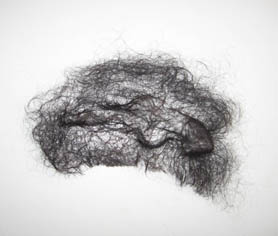 | 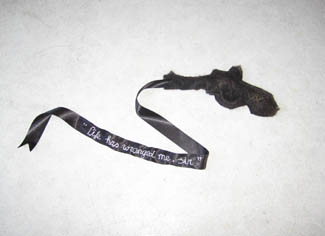 |
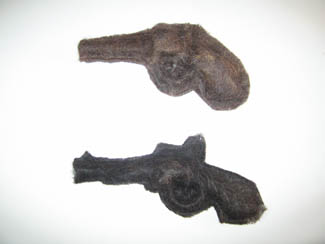 |
Previous Page | 13 14 15 16 17 | Next Page page 15 of 23 pages

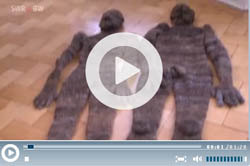
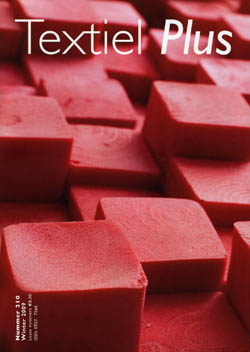

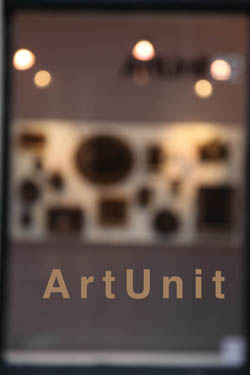
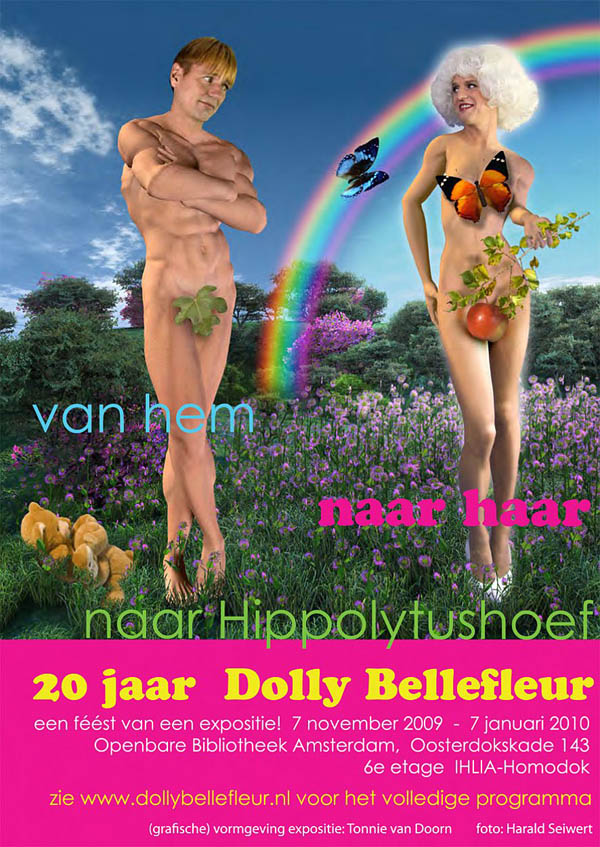

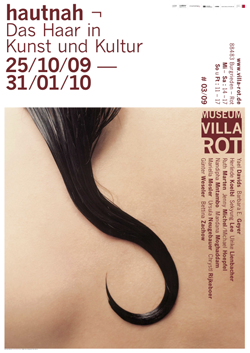

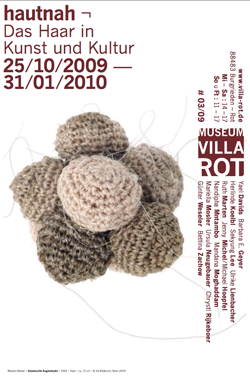

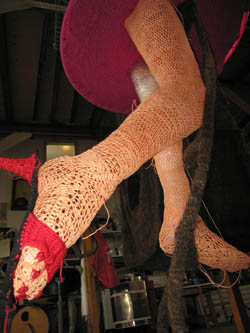
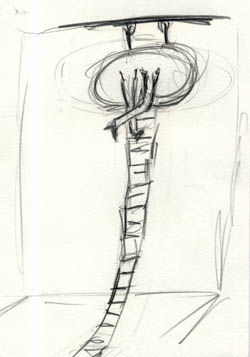
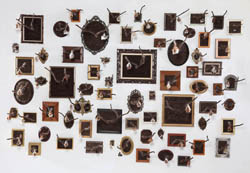
.jpg)
